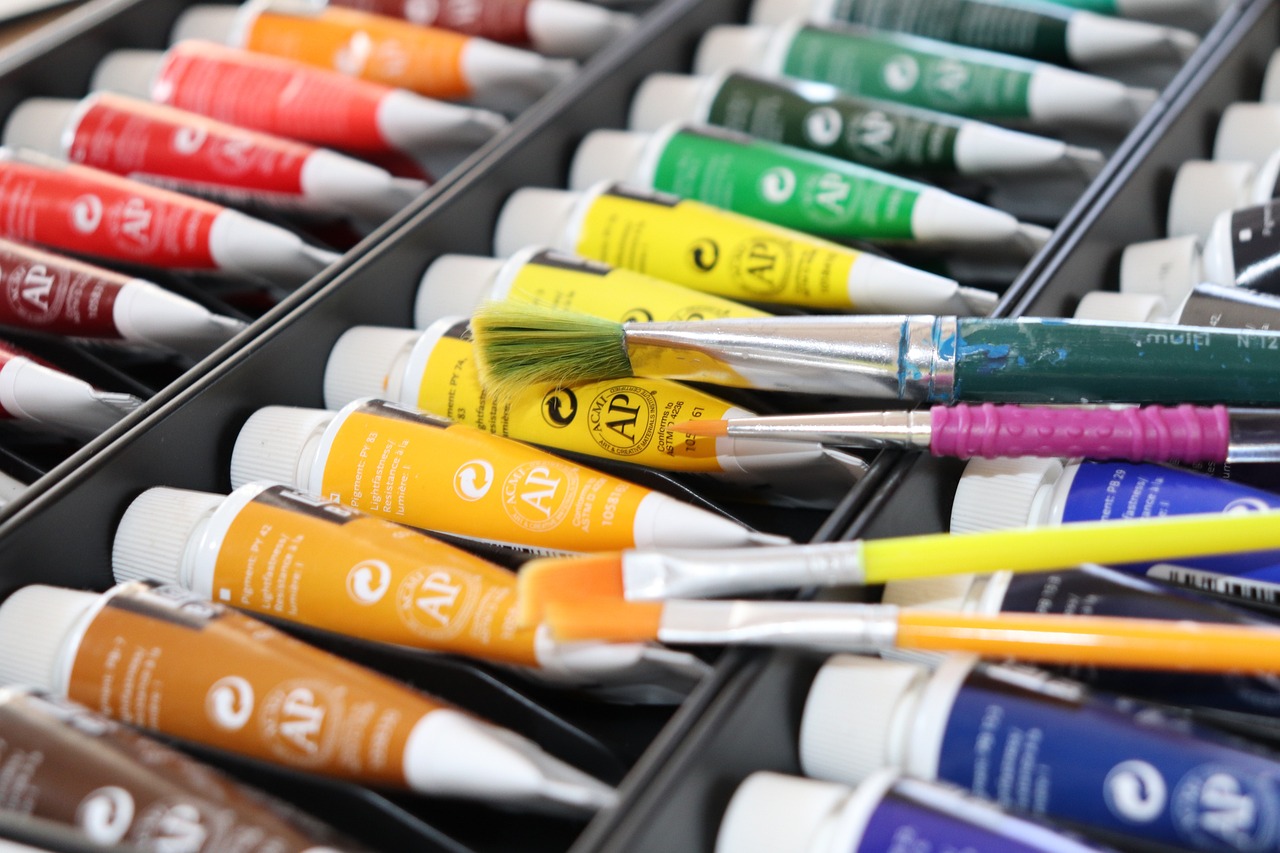In recent years, environmental sustainability has become a critical concern for individuals and industries alike. As we delve into the ecological footprints of various products, acrylic paint comes under scrutiny for its environmental impact.
This article aims to explore the eco-friendliness of acrylic paint, dissecting its components, usage, and lifecycle to shed light on its interaction with our planet.
Understanding Acrylic Paint
What is Acrylic Paint?
Acrylic paint is a popular medium in art and decoration, known for its versatility, quick drying time, durability, and the debate surrounding its environmental impact, leading many to ask: “Is acrylic paint eco friendly ? ”
It consists of pigment suspended in an acrylic polymer emulsion, with water acting as the vehicle. When water evaporates, it leaves behind a colorful layer of fast-drying plastic.
Acrylic paint, while celebrated for its versatility and durability, raises environmental concerns due to its plastic-based composition. When it dries, it becomes a type of plastic, contributing to microplastic pollution.
Moreover, the production and disposal of acrylic paint can have negative impacts on the environment, leading artists and companies to seek more sustainable, eco-friendly alternatives.
Evaluating the Environmental Impact of Acrylic Paint
Chemical Composition and Environmental Concerns
Acrylic paint contains various chemicals, including formaldehyde and ammonia, which can pose environmental threats when not managed properly.
These substances can contribute to air and water pollution, raising concerns about their lifecycle impact.
Production Process
The production of acrylic paint involves significant energy consumption and generates emissions. The process of synthesizing acrylic polymers is resource-intensive, contributing to the environmental footprint of these art materials.
Packaging and Waste
Most acrylic paints come in plastic containers, contributing to plastic waste. The disposal of unused paint poses another environmental challenge. Improper disposal can lead to chemicals leaching into the soil and waterways, causing pollution.
Water Usage
Cleaning brushes and diluting paint often require substantial amounts of water. Moreover, disposing of water mixed with acrylic paint improperly can introduce pollutants into the sewage system, affecting aquatic ecosystems.
Acrylic Paint and Its Life Cycle

Lifecycle Analysis
A comprehensive analysis of acrylic paint’s lifecycle—from production to disposal—reveals its environmental impact at each stage. Resource extraction, manufacturing, usage, and end-of-life stages all contribute to its ecological footprint.
Durability vs. Sustainability
While the durability of acrylic paintings might seem like a plus, it also means that they last longer in the environment, potentially causing long-term ecological harm.
This durability raises questions about the balance between artistic creation and environmental sustainability.
Eco-Friendly Alternatives and Solutions
Alternatives to Traditional Acrylic Paints
In response to environmental concerns, some manufacturers have developed eco-friendly alternatives. These include water-based acrylics and paints made with natural pigments, which aim to minimize harmful emissions and waste.
Best Practices for Eco-Conscious Artists
Artists can adopt practices such as using minimal paint, recycling containers, and properly disposing of waste water to reduce their environmental impact.
Choosing eco-friendly art supplies and advocating for sustainable practices also play a crucial role.
Advances in Eco-Friendly Art Supplies
The art supply industry is responding to the demand for greener options, with ongoing research and development focused on reducing the environmental impact of art materials. These efforts aim to provide artists with sustainable choices without compromising quality.
Making an Informed Choice
Assessing the Impact
Evaluating the eco-friendliness of art supplies involves understanding their chemical composition, production process, and disposal methods.
Consumers and artists can make informed choices by seeking out products with transparent environmental practices and certifications.
Role of Artists and Consumers
Artists and consumers hold power in promoting environmental sustainability through their choices.
By prioritizing eco-friendly art supplies and practices, they contribute to a larger movement towards minimizing the environmental impact of the art world.
The Impact of Acrylic Paint on Wildlife and Ecosystems

- Chemical Leaching into Waterways: When acrylic paint is improperly disposed of, the residual polymers and toxic substances can leach into water bodies, affecting the quality of the water and posing a threat to aquatic life.
- Soil Contamination: Chemical components of acrylic paint can seep into the soil, altering its composition and potentially harming plants and the organisms that rely on them for survival.
- Food Chain Disruption: Toxins from paints can accumulate in the tissues of animals, leading to bioaccumulation and biomagnification, which can disrupt entire food webs and ecosystems.
- Habitat Degradation: The disposal of non-biodegradable paint containers contributes to habitat destruction, as they may take hundreds of years to decompose, affecting wildlife habitats.
- Impact on Birds and Small Mammals: Birds, small mammals, and insects can ingest paint particles or chemicals, which can lead to poisoning, reproductive issues, and mortality.
Consumer Awareness and Demand
Consumer awareness plays a pivotal role in shaping market demand for eco-friendly art materials. As individuals become more educated about the environmental impacts of their choices, there’s a noticeable shift towards sustainable products. This heightened consciousness has led to:
- Increased demand for art supplies that are non-toxic, biodegradable, and made from renewable resources.
- More manufacturers dedicating resources to research and develop greener alternatives.
- Greater availability of eco-certified art materials, as brands respond to consumer preferences for sustainability.
- Enhanced transparency from companies about the ecological footprint of their products, spurred by consumer demand for information.
Frequently Asked Questions (FAQs)
Is it possible to recycle acrylic paint containers?
Yes, but it depends on your local recycling program. Check with your waste management services for guidelines on recycling paint containers.
How can I dispose of unwanted acrylic paint in an eco-friendly manner?
Many communities offer hazardous waste disposal services that accept acrylic paint. Avoid pouring it down the drain or into the trash.
Are there eco-certifications to look for when purchasing art supplies?
Yes, look for certifications like the EcoLabel in Europe or Green Seal in the US, which indicate lower environmental impact.
Can acrylic paints affect indoor air quality?
Some acrylic paints emit volatile organic compounds (VOCs), which can affect air quality. Opt for low-VOC or VOC-free paints when possible.
What are some simple steps I can take to reduce my environmental impact as an artist?
Use paints sparingly, clean brushes responsibly, recycle containers, and choose sustainable art materials whenever possible. Engaging in these practices can significantly reduce your ecological footprint as an artist.
Conclusion
Assessing the eco-friendliness of acrylic paint reveals a complex picture of environmental impacts at various stages of its lifecycle. While acrylic paint offers undeniable benefits for artists, its ecological footprint cannot be overlooked.
The art community, along with manufacturers, play a vital role in shifting towards more sustainable practices. By staying informed and making conscious choices, artists can help pave the way for a greener, more sustainable art world.











